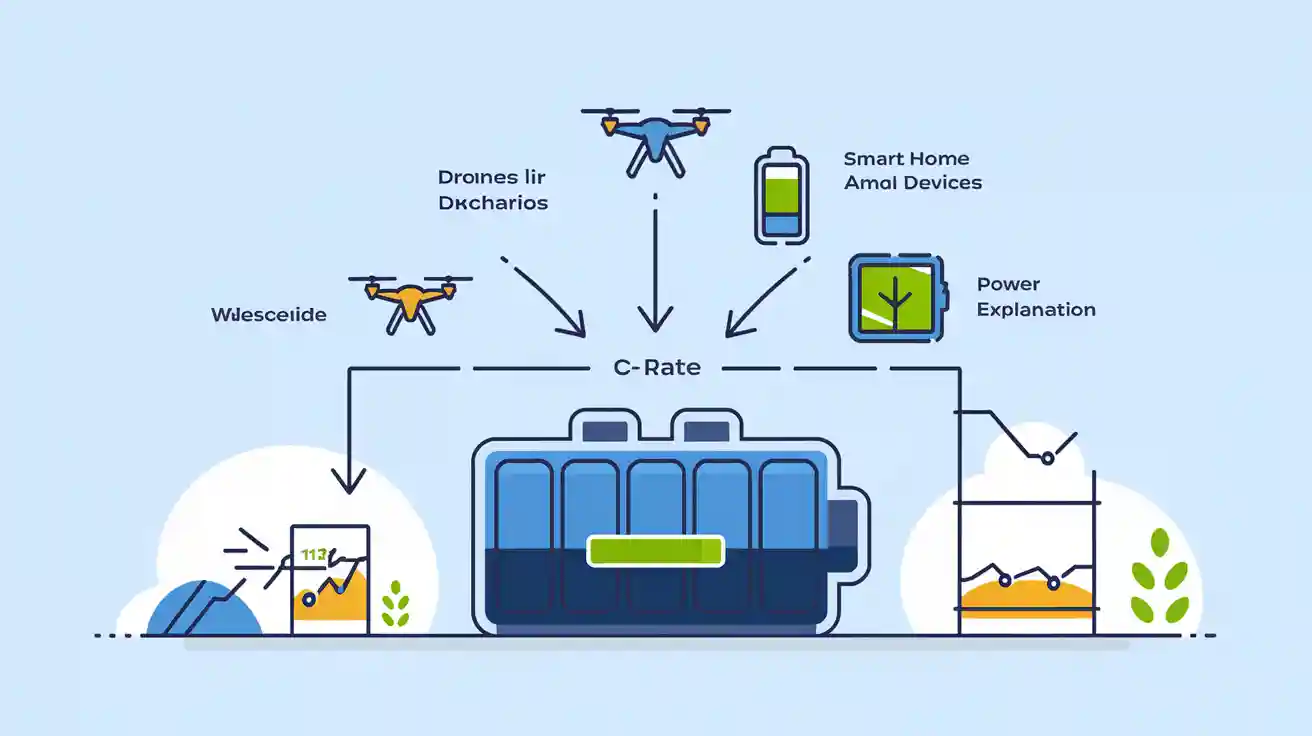
Définition en une phrase
C-Rate is a measure of how quickly a battery is charged or discharged relative to its rated capacity, expressed as a multiple or fraction of that capacity.
Explication détaillée
C-Rate (or C rating) is a fundamental concept in battery technology, especially for lithium-ion and lithium polymer batteries. It describes the rate at which a battery can be safely charged or discharged. A 1C rate means the battery will be fully charged or discharged in one hour. For example, a 2C rate means the process takes 30 minutes, while 0.5C means two hours. The C-Rate is calculated as:
C-Rate = Current (A) / Battery Capacity (Ah)
This metric is crucial because it directly impacts battery performance, lifespan, and safety. Charging or discharging at rates higher than recommended can lead to overheating, reduced capacity, and even safety hazards. International standards such as IEC 62133 and UL 1642 use C-Rate as a basis for battery testing and certification (Université de la batterie, Ossila, DV Power).
Key Components of C-Rate
- Battery Capacity (Ah or mAh): The total charge a battery can deliver.
- Charge/Discharge Current (A): The actual current applied during charging or drawn during use.
- Résistance interne : Lower resistance allows higher C-Rates without excessive heat.
- Température : High C-Rates increase heat; temperature management is essential.
- Système de gestion de la batterie (BMS) : Monitors and controls C-Rate for safety and longevity.
Applications dans le monde réel
C-Rate selection depends on the device’s power needs:
- High C-Rate (e.g., 10C, 100C): Used in drones, power tools, and RC vehicles that require rapid bursts of energy. For instance, Yungbang’s custom high-discharge lithium battery packs are designed for drones and electric tools, delivering stable voltage and high current without overheating.
- Low C-Rate (e.g., 0.1C, 0.2C): Ideal for smart home sensors, IoT devices, and energy storage systems where long runtime and battery life are priorities. Yungbang supplies low C-Rate batteries for smart home and industrial sensors, ensuring reliable, long-lasting performance.
Visual Example:
| C-Rate | Discharge Time | Application typique |
|---|---|---|
| 10C | 6 min | Racing drones, RC cars |
| 1C | 1 hour | Power tools, e-bikes |
| 0.2C | 5 hours | Smart home, energy storage |
Idées reçues
- Higher C-Rate is not always better: While high C-Rate batteries deliver more power, they often have shorter lifespans and require advanced thermal management.
- C-Rate is not fixed: It varies with battery design, chemistry, and application. Always follow manufacturer recommendations and consider the device’s duty cycle.
- Safety first: Exceeding the recommended C-Rate can cause overheating, capacity loss, or even fire.
Concepts connexes
- Battery Capacity: The total energy a battery can store.
- Discharge Rate: The speed at which energy is drawn from the battery.
- Densité énergétique : How much energy a battery holds per unit weight or volume.
- Durée du cycle : The number of charge/discharge cycles a battery can endure.
- Système de gestion de la batterie (BMS) : Electronics that monitor and protect the battery.
- Résistance interne : Affects heat generation and efficiency at high C-Rates.
For a deeper dive, see Battery University’s glossary et Ossila’s C-Rate guide.
Looking for custom lithium battery solutions that match your C-Rate needs? Explore Yungbang’s high-performance, certified battery packs for drones, smart home, and industrial applications: Yungbang Official Site

